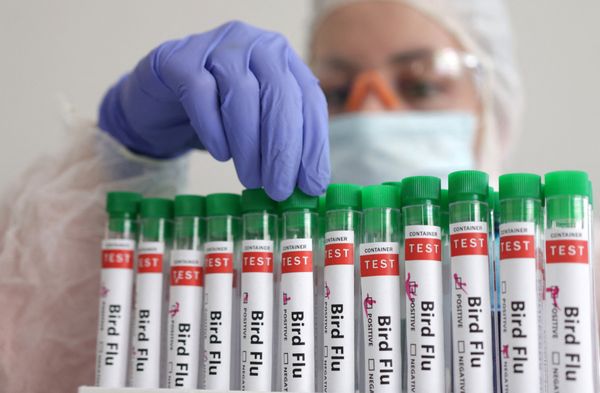There is a lot to fight over in the vagaries of dietary science, but possibly nothing has been as contentious or as longstanding as the salt wars. For decades, public-health officials have pushed people to eat less salt, which is linked to lower blood pressure, which in turn is linked to less heart disease. And for the same decades, a vocal opposition has challenged the guidelines as unscientific: No solid evidence directly links salt intake to heart disease over the long term.
The vitriol of the salt wars was on display in Science. The journal noted that one side took an article as “compelling evidence of the value of reducing sodium intake,” while another said the same article “reads like a New Yorker comedy piece” and was the “worst example of a meta-analysis in print by a long shot.” That was 1998. The evidence hasn’t gotten much better since then.
What would settle the debate once and for all is a randomized controlled trial: Take thousands of people, randomly assign them a low-salt or regular diet, and follow them for years—recording not just short-term changes in blood pressure but also long-term changes in heart attacks and death from heart disease. This is what the Institute of Medicine—a body of expert scientists that has since changed its name to the National Academy of Medicine—suggested at the end of a 2013 review on salt-intake research.
In May 2017, Daniel Jones, an obesity researcher at the University of Mississippi Medical Center, convened a group on both sides of the salt debate to explore the feasibility of a randomized controlled trial. “Over the last few years in the medical literature,” he said, “there has been ... ” He paused to look for the right words. “I’ll say, a more contentious spirit. It was bothersome to me to see people disagreeing in a disagreeable way.” Jones himself believes current data sufficiently support a link between salt and heart disease, but he thinks stronger evidence in the form a randomized controlled trial could provide the push for policies that limit salt in processed foods.
The groups ran through their research options. The best evidence linking salt intake and high-blood pressure comes from short-term feeding studies, where researchers prepare the meals for participants over several weeks. But it is far too expensive to feed participants for the years it takes for heart disease to show up. And frankly, how many volunteers would follow a bland diet for years?
So they considered people already on controlled diets. Nursing homes, they ruled out because many of the elderly have medical conditions that already require eating a certain amount of salt. The military they ruled out because the population is so young and fit that it would take too long for heart disease to show up. That left prisons.
This month, the group published an editorial in the journal Hypertension proposing to study low-sodium diets in prisoners. Jones says he is currently in discussion with a private-prison management company to conduct an initial pilot study. He wanted to publish the proposed research to spark a conversation on the myriad concerns—ethical and logistical—that come with conducting research in prisons.
There are reasons to be cautious about research in prisons, which has a long and sometimes ugly history. “Until the early 1970s,” wrote the law professor Lawrence Gostin, “R.J. Reynolds, Dow Chemical, the US Army, major pharmaceutical companies, and other sponsors conducted a wide variety of research on prisoners—a captive, vulnerable, and easily accessible population.” Some of the infamous experiments were at Holmesburg Prison in Philadelphia, where a dermatologist subjected prisoners to a suite of products including what became the skin-cream ingredient Retin-A . “All I saw before me were acres of skin,” the dermatologist reportedly told a newspaper reporter. “It was like a farmer seeing a field for the first time.”
The 1970s brought congressional hearings on protections for human subjects and the passage of the National Research Act, both of which were spurred by public outcry after the Tuskegee study. Prisoners are now considered a vulnerable population—along with children, pregnant women, and the mentally disabled—who required special protections in research. “Consent means something very different in the prison environment,” says Marc Morjé Howard, the director of the Prisons and Justice Initiative at Georgetown, whom Jones also consulted about preliminary ideas for the salt-intake study. Prisoners who participate in a study so they can get access to health care or because they believe they must do so to stay in the good graces of correctional officers may not be choosing freely.
The Department of Health and Human Services currently restricts federally funded research in prisons to five categories: 1) studying incarceration or criminal behavior itself, 2) studying prisons as institutions, 3) studying conditions that disproportionately affect prisoners like drug addiction or hepatitis, 4) epidemiology research on prevalence and risk factors of disease, and 5) research that can help the prisoners being studied.
The salt-intake study, Jones says, falls in the last category. The results could inform salt guidelines for both what average people should eat and what people are fed in prisons. The pilot study will be privately funded, he says, but they hope to seek federal funding for a larger study at several different prison sites, ideally federal prisons for the sake of standardization. Each site will be randomly assigned to feed inmates either their current diet or a low-sodium diet of less than 2,300 milligrams per day, as recommended by the American Heart Association. Individual prisoners will not choose the menu they’re offered—the rationale being they already do not have control over prison menus, says Jones—but they can decide whether they want their health data to be collected for the study.
But is it, in fact, okay to take salt away from an entire prison and serve food that most people would think is bland, if healthy? (The average American eats 3,400 milligrams of sodium per day.) Unappetizing food—like the nutritionally complete but tasteless nutraloaf—has been used as a form of punishment in prisons. Howard suggested the prisoners who object to a low-sodium diet, either because of health or matters of taste, be given a way to opt out.
But that could cause logistical complications. There is no way to monitor exactly what prisoners are eating, only what they are being offered. “People share their food. They dump their food trays,” says Aaron Littman, a lawyer at the Southern Center of Human Rights. “It’s not like somebody is watching your intake.” Prison food is also notoriously bad, and many prisoners supplement their diets with food bought from the commissary—most of it high-sodium snack foods like ramen or chips. Jones says one goal of the pilot study is to figure out how much of the prisoners’ diets is coming from the commissary, and they may work with vendors to restrict the sale of high-sodium foods.
“It’s hard to overstate the importance of food in prisons,” says Keramet Reiter, a criminologist at the University of California at Irvine, who has done research in prisons. Packs of ramen function as currency. Prisoners assemble meals like “burritos” from ramen, Doritos, beef sticks, and a variety of other foods. “This is an environment where the food is so bland, and you have so few things to look forward to,” she says. Taking away Doritos (210 milligrams of sodium per ounce) could cause real disruptions in a prison.
Reiter notes that even the best-run studies in prison rest on a fundamental premise: “Scientists need some kind of controlled environment and population. They’re partly exploiting the institutional circumstances.” Federally funded biomedical research in prisons is now rare because of the HHS restrictions. But pharmaceutical companies can also run privately funded trials in prisons—as they have done on HIV drugs in Florida, Texas, and Rhode Island—and they are not legally bound by the same regulations. “I think it’s a Pandora’s box,” says Reiter, and the opaqueness of the prison system makes it hard for abuses to come to light.
Paul Wright, the founder of the Human Rights Defense Center, also questioned whether a salt-intake study would actually benefit prisoners. There are, he points out, so many bigger problems with prison food system: inadequate portions, rotten food, food labeled “not for human consumption,” according to one lawsuit. If those more pressing issues aren’t fixed, he says, what difference would more or less salt make?
Prisoners are also not entirely representative of the general population, which could make it harder to generalize from their data. They are disproportionately male and people of color. They have higher rates of drug use, HIV, and hepatitis C. They are not an ideal population for a health study, but they may be the only one available—that is, if they should be available for research at all.
Jones says he’s been getting feedback from the scientific community—most of it encouraging—since publishing the proposal. He’s also hoping to engage more ethicists and prisoners’-rights advocates. “Broadly, we’re looking for advice on whether this is an insane idea,” he says. “Or whether it’s something that experienced people think might be achievable.”







